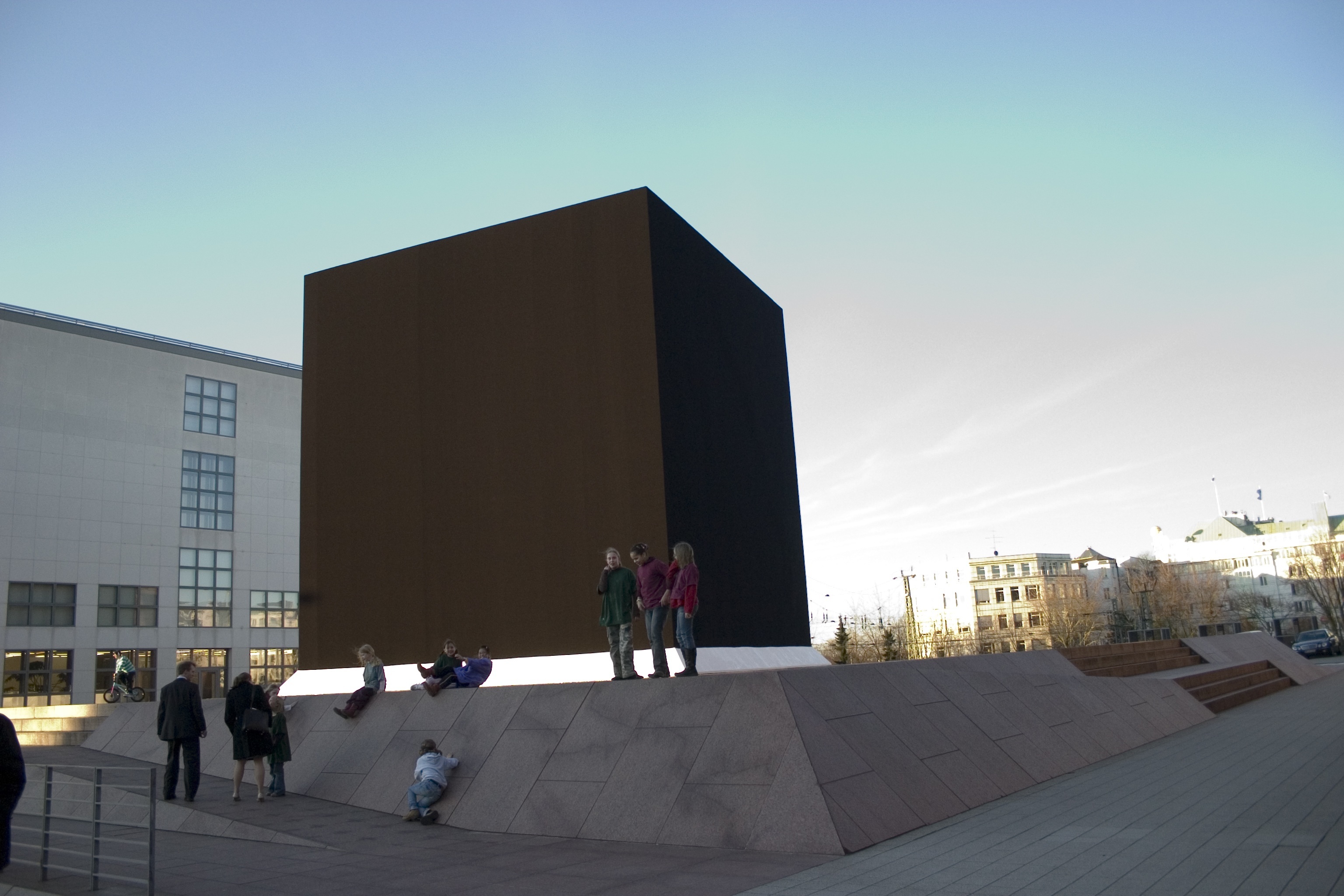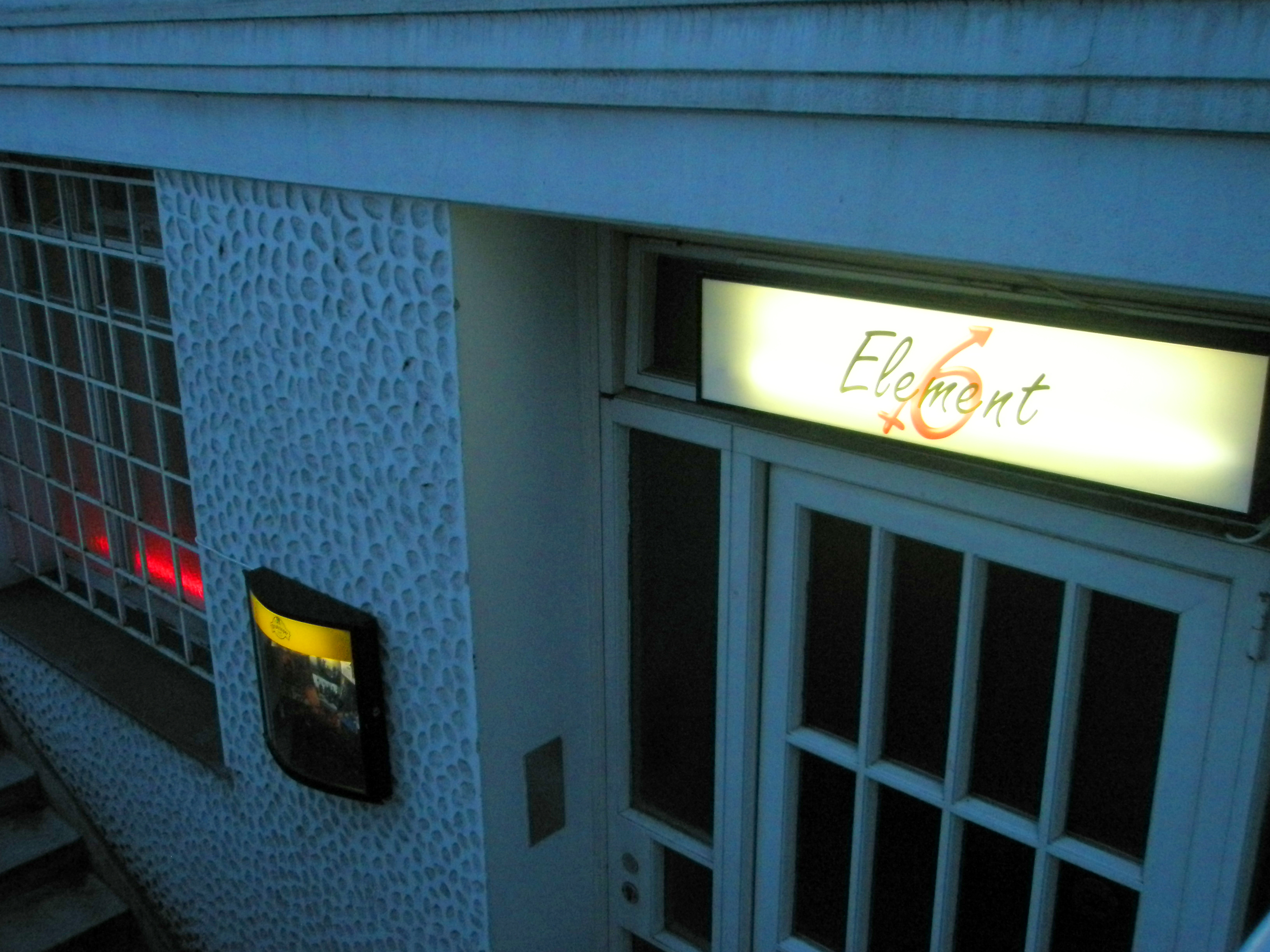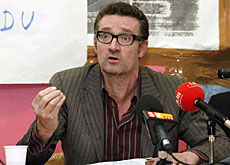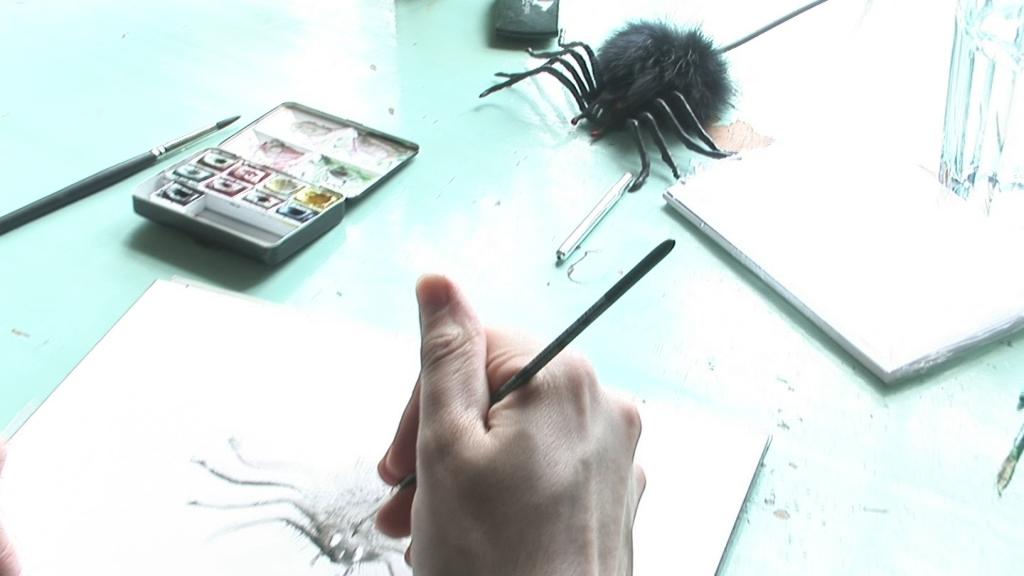Neuchâtel’s black cube creates discord

A 15-metre-high pitch black cube, set to be installed at Neuchâtel’s port next year as part of the city’s millennium anniversary, has sparked local controversy.
On Thursday 150 artists, politicians and members of the public met to discuss the merits of the monumental fabric-clad cube by German artist Gregor Schneider, which evokes modern art and the Kaaba in Mecca.
The cube is due to feature in the Abstract Protest exhibition, organised by the Neuchâtel Art Centre (CAN) – one of 40 projects chosen to mark the millennium celebrations.
The project, which was due to be officially presented in autumn, recently came to light after the sudden resignation by one of the leading members of the organising committee.
“It’s out of context, disproportionate and a provocation,” Daniel Bürki, the former president of Neuchâtel’s Millenium Association, told the audience at Neuchâtel University on Thursday.
Cube concerns
Bürki’s surprise resignation in March highlighted several concerns over the cube, which has only ever been viewed once by the public – at the The Black Square – Homage to [Russian artist Kasimir] Malevitch exhibition at the Hamburg Kunsthalle in 2007.
Plans to install it in St. Mark’s Square as part of the 2005 Venice Biennale were rejected by city officials, who suggested it might offend or provoke Muslims. The same thing happened in Berlin in 2006.
CAN director Arthur de Pury regrets how plans have spun out of control and hopes a series of public sessions can refocus the debate.
Organisers say the exhibition examines various themes: iconoclasm and its links to Neuchâtel history via the Protestant Reformation, and abstract modern art.
Schneider’s cube also crystallises links between abstract art, Islam, idolatry and issues about our own identity, explained CAN’s director Arthur de Pury.
“His work is a kind of mirror,” said de Pury. “If we are afraid of a black cube, we have to ask ourselves why and how does it influence our identity.”
Schneider’s work is built from aluminium scaffolding, covered by wooden panels and taut jet-black cloth, and stands on a white plinth. The inside is inaccessible.
The German artist, who is interested in rooms and space, says his cube was inspired by the Kaaba at the centre of the Great Mosque in Mecca, as well as by Malevitch’s famous Black Square oil painting.
But it is not a reconstruction of the Kaaba, he says. “The cube is nothing more than an oversized, abstract formal sculpture.”
Local criticism
Bürki was not alone on Thursday night in his criticism of the project, however.
“It’s very elitist and out of place,” said one man. “It’s a sensitive project as it makes reference to something that might scare people and won’t unite all Neuchâtel people.”
“I don’t really see what a cube has to do with the millennium celebration of a French-speaking Swiss city,” said a 14-year-old boy.
Bur it remains difficult to gauge the levels of opposition.
In a poll in the regional Impartial/Express newspapers, 88 per cent of the 487 readers surveyed said they thought the project should not be kept. The French-speaking city in northwestern Switzerland has a population of 32,500.
Muslim communities
Muslim communities and religious representatives in Hamburg were generally fully supportive of the cube, one describing it as “a triumph for freedom of expression”. Feedback from local Muslim communities has been generally positive.
Ramzi Ben Fraj, secretary general of the Union of Muslim Associations in canton Neuchâtel, and one of the few Muslims in attendance, said he didn’t see a big problem.
“I think it’s a very good idea,” he said. “Why are you scared?”
A member of the Fondation Culturelle d’Anatolie felt it was “an artistic project” and didn’t really concern Muslims.
“But if it can bring together our common points then it’s a good thing,” he told swissinfo.ch.
“Worried”
But Ihab el Kaissi, head of the Centre Islamique Serrières, told Swiss national television: “After the minaret vote we are worried about creating conflicts between the population and Muslim communities.”
The project has the backing of the Neuchâtel local government and the other organisers of next year’s anniversary.
A number of artists and religious figures from French-speaking Switzerland also recently voiced their support in an open letter.
“Fear is a bad adviser as we saw during the minaret vote,” said Denis Müller, a theology professor from Geneva University.
“If art is not able to upset us, then we might as well close down all the museums and theatres,” said Matthieu Béguelin, an actor and theatre director.
“Hiding something we don’t like is not my idea of what Neuchâtel is all about.”
Simon Bradley in Neuchâtel, swissinfo.ch
The Kabaa is a cube-shaped building in Mecca, Saudi Arabia. According to Islamic tradition, the Kaaba, which means ‘cube’ in Arabic, is the first sacred structure on earth.
The building predates Islam, and, according to Islamic tradition, the first building at the site was built by Abraham, rebuilt by Abraham and Ishmael, and reconstructed numerous times since. The building has a mosque built around it, the Masjid-al-Haram.
All Muslim face the Kaaba during prayers, no matter where they are. The actual Kaaba is the goal of the Muslim pilgrimage known as the hajj. In Islam it is not forbidden to represent the Kaaba, and illustrations of the building and its internal structure are plentiful.
Schneider (April 5, 1969) is a German artist whose main area of work is constructed rooms. In 2001, he was awarded the Golden Lion at the Venice Biennale for his work Totes Haus u r exhibited at the German Pavilion.
Gregor Schneider studied from 1989 to 1992 at several German Art Academies including: the Kunstakademie Düsseldorf (Art Academy of Düsseldorf) and at Kunstakademie Münster (Academy of Fine Arts Münster), and at the Hochschule für Bildende Künste (University of Fine Arts Hamburg).
From 1999 to 2003, he served as a guest professor at several art schools including: De Ateliers in Amsterdam, the Academy of Fine Arts Hamburg and at the Royal Danish Academy of Fine Arts, Copenhagen. Schneider has been nominated as professor of sculpting to the University of Art Berlin in 2009.

In compliance with the JTI standards
More: SWI swissinfo.ch certified by the Journalism Trust Initiative




You can find an overview of ongoing debates with our journalists here. Please join us!
If you want to start a conversation about a topic raised in this article or want to report factual errors, email us at english@swissinfo.ch.